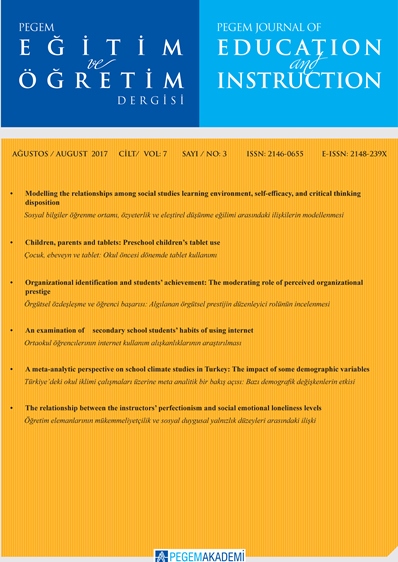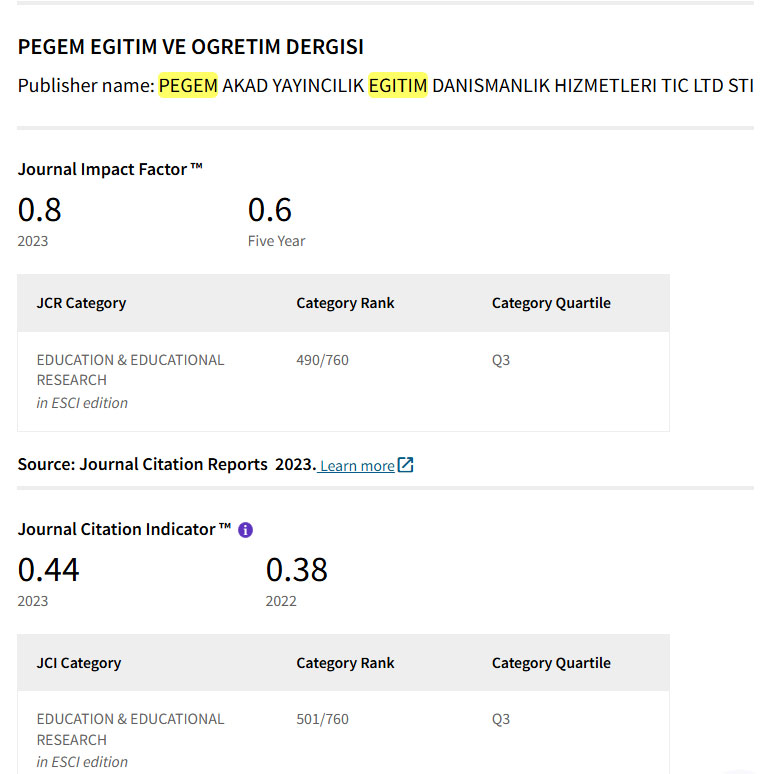Characterizing Indonesian EFL teachers’ questioning as informal formative assessment strategy
Keywords:
EFL Teachers’ questioning, formative assessment, informal formative assessment, ESRU sequence, Indonesian contextAbstract
A formative assessment has been a mushrooming issue in language education. However, challenges in providing an effective formative assessment in the EFL context remain uncovered at higher education levels. By giving attention to informal formative assessment practices, teachers are expected to minimalize the inadequate knowledge of formative assessment. ESRU sequence was used to illustrate every single steps to diagnose students’ actual knowledge and gap found. Five EFL teachers and their classess were involved. The data were collected through classroom observation and interview. The result revealed that teachers with complete ESRU sequences tend to use questioning technique more effectively as an informal formative assessment. The more complete ESRU sequences they practiced, the more information they collected to provide appropriate feedback to students. Besides, teachers’ strategy in making use of information gathered was worthnoting to enhance students’ learning. Hence this study can contribute as a continuum base of formal formative assessment to construct better learning instruction as well as consideration for decision and policy making in EFL higher education context.
Downloads
References
Anton, M. (2015). Shifting trends in the assessment of classroom interaction. In: N. Markee (Ed.), The handbook of Classroom Discourse and Interaction. pp. 74–89. West Sussex, Wiley Blackwell.
Bailey, A.L., Heritage, M. (2014). The Role of Language Learning Progressions in Improved Instruction and Assessment of English Language Learners. Tesol Quartely, Vol 48(3). Pp. 480-506
Black P, Harrison C, Lee C, Marshall B, and Wiliam, D. (2003). AssessmentforLearning: PuttingItintoPractice. Maidenhead: Open UniversityPress.
Black P & Wiliam D. (2009). Developing the theory of formative assessment. Educ Asse EvalAcc, Vol 21, Pp. 5–31DOI 10.1007/s11092-008-9068-5
Black, P. (2015). Formativeassessment-anOptimisticButIncomplete Vision. Assessment in Education: Principles, Policy&Practice. Vol. 22 (1) Pp. 161-177
Box, C.,Skoog, G.,Dabbs, J, M.(2015). A case study of teacher personal practice assessment theories and complexities of implementing formative assessment. American Educational Research Journal, 52(5), 956–983 DOI: 10.3102/0002831215587754
Burns, C &Myhill, D. (2004). InteractiveorInactive? A ConsiderationoftheNatureofInteraction in Whole ClassTeaching. Cambridge UniversityPress, Vol 34 (1), pp. 35-49
Cân Daşkin, N. (2017a). A conversation analytic investigation into L2 classroom interaction and informal formative assessment. ELT Research Journal, 6(1), 4–24.
Cân DaşKIN, N. (2017b). A conversation analytic study of reference to a past learning event in L2 classroom interaction: Implications for informal formative assessment. Unpublished doctoral dissertation. Middle East Technical University, Ankara.
Cân Daskin, N., Hatipoglu, C. (2019). Reference to a past learning event as a practice of informal formative assessment in L2 interaction. Language Testing, 14(2), 16-30. DOI:10.177/0265532219857066
Carless, D. (2011). From Testing To Productive Student Learning: Implementing Formative Assessment In Confucian-Heritage Settings. Journal of Second Language Teaching and Research. Vol 1(2) pp. 155 – 158
Clark, L. (2010). Formative assessment: There is nothing so practical as a good theory. Australian Journal of Education, 54(3). 341–352
DougLemov. (2010). Teachlike a champion: 49 Techniques that put students on the path to college. San Fransisco : John Wiley& Sons.
Furtak, E. M., Swanson, R., Kiemer, K.,Leon, V., Morison, D., Heredia, S.C. (2016). Teacher’s formative assessment abilities and their relationship to student learning: Findings from a four-year intervention study. InstrSci,44, 267-291.CrossMark @Springer DOI 10.1007/s11252-016-9371-3
Gattullo F. (2000). FormativeAssessment In ELT Primary (Elementary) Classrooms: An ItalianCase Study. Language Testing Vol. 17 (2) 278–288
Goodwin, S. S.,Sharp, G. W., Cloutier, E. F., Diamond, N. A. (1983). Effective Classroom Questioning. Retrieved from ERIC database. (ED 285497)
Gotwals, A.W.,Birmingham, D. (2016). Eliciting, interpreting, and responding to students' ideas: Teacher candidates' growth in formative assessment practices. Res SciEduc, 46, 365-388. DOI 10.1007/s11165-015-9461-2
Hattie, J., & Timperley, H. (2007). The power of feedback. Review of Educational Research, 77(1), pp. 81-113. DOI: 10.3102/003465430298487
Hill, K., Mcnamara, T. (2012). Developing a comprehensive, empirically based research framework for classroom-based assessment. Language Testing, 29(3), 395–420.
Heritage, J. (2012). Epistemics in action: Action formation and territories of knowledge. Research on Language & Social Interaction, 45(1), 1–29.
Heritage, M., Heritage, J. (2013). Teacher questioning: The epicenter of instruction and assessment. Applied Measurement in Education, 26(3),176–190.
Jiang, Y. (2014). Exploring teacher questioning as a formative assessment strategy. RELC Journal, 45(3), 287–304. sagepub.co.uk/journalsPermissions.nav. DOI: 10.1177/0033688214546962
Ketabi, S. & Ketabi, S. (2015). Classroom and Formative Assessment in Second/Foreign Language Teaching and Learning. Theory and Practice in Language Study Vol 4 (2), pp. 435-440 DOI:10.4303/tpls.4.2.435-440
Lee I. (2011). Formative assessment in EFL writing: An exploratory case study changing English. Studies in Culture and Education, 18(1),99-111, DOI:10.1080/1358684X.2011.543516
Martinho, M.,Almeida, P.A., Dias, J.T. (2014). Fostering students questioning through moodle: Does it work? Presented in 5th World Conference on Educational Sciences-WCES 2013. Procedia-Social and Behavioral Sciences, 116, 2537-2542. DOI:10.1016/j.sbspro.204.01.607
Marsh, C J. (2007). A Critical analysis of the use of formative assessment in schools. Edu ResPolicyPrac, Vol 6. Pp. 25-29 DOI 10.1007/s10671-007-9024-z
Milawati and Suryati, N. (2019). EFL Teacher’s Oral Questioning: Are Her Questions and Strategies Effective? Dinamika Ilmu Vol. 19 No. 1, pp. 37-55. DOI: http://doi.org/10.21093/di.v19i1.1545
Parsons, D. (2017). FormativeAssessment in DiscussionTasks. ELT JournalVol 71 (1). 24-36
Popham, W J. (2008). Transformative Assessment. Alexandria, VA: Association for Supervision and Curriculum Development.
Rasyidah, U., Triana, N., Saukah, A. (2020). The teachers’ assessment knowledge and practice: Contribution of the past-time experiences to the present-time decision. The Qualitative Report, 25(7),1738-1753. Retrieved from https://nsuworks.nova.edu/tqr/vol25/iss7/1/
Rea-Dickins, P. (2001). Mirror, mirror on the wall: Identifying processes of classroom assessment. Language Testing, 18(4),429–462.
Richards, J.C., Lockhart, C. (1994). Reflective Teaching in Second Language Classrooms. Cambridge: Cambridge University Press.
Ruiz-Primo, M. A., Furtak, E. M. (2006). Informal formative assessment and scientific inquiry: Exploring teachers’ practices and student learning. Educational Assessment, 11(3), 205–235.
Ruiz-Primo, M. A. (2011). Informal formative assessment: The role of instructional dialogues in assessing students’ learning. Studies in Educational Evaluation, 37(1),15–24.
Suryati, N, and Archer. (2013). Students' Perceptions of EFL Classroom Interaction: An Indonesian Study. International Journal of Literacies 19(3):181-199. DOI: 10.18848/2327-0136/CGP/v19i03/48782
Sherris, A. (2011). Teddy the T-Rex, interaction, and spontaneous formative second language assessment and treatment. Classroom Discourse,2(1),58–70.
Wessel, R J. (2016). Responding to wrong answers. Religious Educator, Vol 16(2) Pp. 174-183
WIDA. (2009). WIDA Focus on Formative Assessment. WIDA consorcium, Vol (1) no. 2. Wisconsin Center for Educational Research.
Widiastuti, I. A. M. S., SaukahA. (2017). Formative assessment in EFL classroom practices. BahasadanSeni, 45(1), 50-63
William, D. (2011).What Is AssessmentforLearning?. Studies in EducationalEvaluation Vol. 37 (1) pp.3-14
Downloads
Published
How to Cite
Issue
Section
License
Copyright (c) 2021 Pegem Journal of Education and Instruction

This work is licensed under a Creative Commons Attribution-NonCommercial 4.0 International License.
Attribution — You must give appropriate credit, provide a link to the license, and indicate if changes were made. You may do so in any reasonable manner, but not in any way that suggests the licensor endorses you or your use.
NonCommercial — You may not use the material for commercial purposes.
No additional restrictions — You may not apply legal terms or technological measures that legally restrict others from doing anything the license permits.




